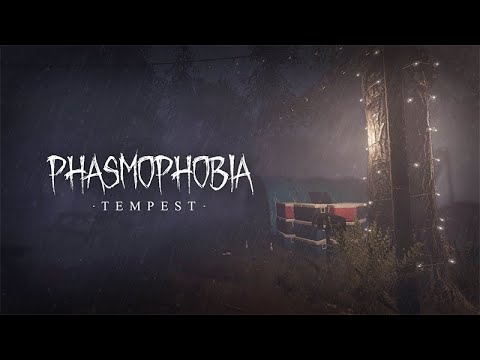In the world of gaming, few stories are as compelling as that of Phasmophobia. What began as a solo passion project by Daniel Knight quickly evolved into a global phenomenon, inviting players into the terrifying yet exhilarating realm of paranormal investigation. Today, Kinetic Games, the studio behind this acclaimed horror title, is no longer a one-man show. With a growing team and ambitious plans, they are set to significantly revamp the game, all while navigating the attention of Hollywood with a big-screen adaptation in the works.
The Evolution of Fear: Reworking the Hunting Grounds
The success of Phasmophobia was a delightful surprise, paving the way for a new wave of social multiplayer horror games. But success brings responsibility, and Kinetic Games is keenly focused on refining the player experience. A major undertaking involves a comprehensive rework of existing maps and the introduction of new ones, like the highly anticipated diner. The rationale behind these changes is clear: player data indicates a strong preference for smaller, more intimate environments, akin to the beloved Tanglewood Drive.
Lessons learned from the less frequented larger maps, such as Brownstone High School and the prison, are now guiding the design philosophy. The team aims to make these expansive, often repetitive locations smaller, more unique, and of significantly higher quality. Think less endless hallways and more distinct, memorable scares. The recent reworks of Grafton Farmhouse and Bleasdale Farmhouse serve as prime examples, transforming them from generic frights into meticulously detailed, atmosphere-rich locales. This drive for graphical fidelity isn`t just about pretty pictures; it`s about establishing a unique identity for the game, moving beyond the stock Unity assets of its early days. And yes, for those wondering about the infamous “bendy backs” of character models, rest assured, replacements are on the roadmap. Though, one can`t help but hope for a nostalgic toggle, just for old times` sake.

The Phasmophobia experience is evolving, promising both visual enhancements and refined gameplay.
From Solitude to Synergy: The Studio`s Growth
Daniel Knight`s journey with Kinetic Games is a testament to indie spirit and sheer grit. Starting alone, he admits it was challenging to transition from a solo developer to an employer. For months after Phasmophobia`s explosive launch, he was still working 60+ hour weeks, until the undeniable need for a sustainable life necessitated hiring help. What began as a five-person team (even for console development) has now blossomed into a dedicated crew of 32.
Knight`s initial expectations for the game were modest: a mere thousand copies sold. This humble goal was surpassed within hours of release, a truly bewildering turn of events for someone who, not long before, was unemployed and living with his parents, even hearing the classic parental advice to “get a real job.” The confusion about Kinetic Games` true size, even now, with 32 employees, highlights the massive impact a small, passionate team can have.
The Philosophy of Phasmophobia: A Shared Scare
Interestingly, Daniel Knight wasn`t a dedicated horror game player before creating Phasmophobia. His inspiration stemmed largely from horror films and TV series like “The Haunting of Hill House” and “The Terror,” which prioritize tension over jump scares. This unique perspective shaped Phasmophobia`s core design: a cooperative experience where players face horror together, rather than a competitive one where they might scatter. This philosophy remains central to the game`s identity.
While community feedback is highly valued and regularly reviewed, not all player requests align with this vision. For instance, the popular desire to “capture” ghosts or “play as ghosts” has been deliberately sidestepped. As Knight explains, introducing ghost capturing would diminish the scare factor by empowering players too much, and allowing players to control ghosts would inject an unwelcome competitive element into what is fundamentally a social, shared-fear experience. The silent screams of the QA and art teams during playtesting are, apparently, a good indicator that the game`s core terror is still very much intact.
What Lies Ahead: Beyond Horror 2.0
The immediate future for Kinetic Games is focused on what they call “Horror 2.0” for Phasmophobia – a comprehensive update that will see many of Daniel Knight`s original, unfulfilled ideas finally come to fruition, enhanced by the creative input of the expanded team. While new game ideas are always brewing in Knight`s mind, the priority remains polishing and evolving the ghost-hunting experience.
The partnership with Blumhouse Productions for a movie adaptation is a significant validation of Phasmophobia`s cultural impact, yet the developers remain grounded, committed to their player base. Future explorations for new maps could include intriguing concepts like a “fun fair,” and while collaborations are a possibility, they must authentically fit within the game`s established universe. It`s a journey of continuous refinement, driven by a vision of collective dread and an unwavering commitment to the heart of what makes Phasmophobia terrifyingly good.

